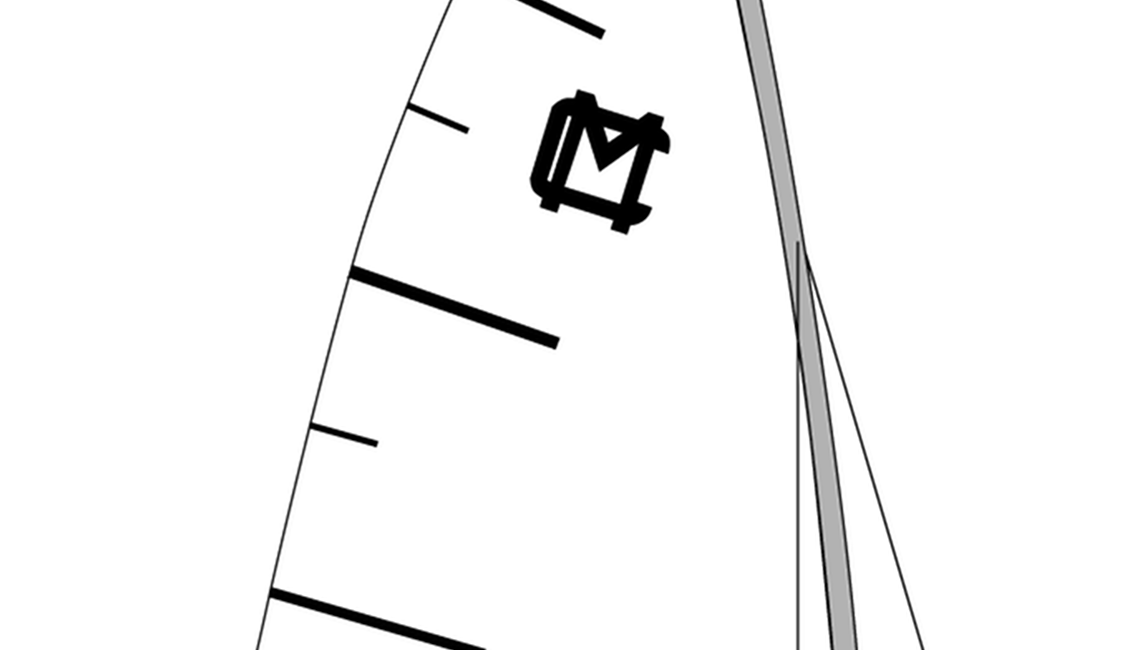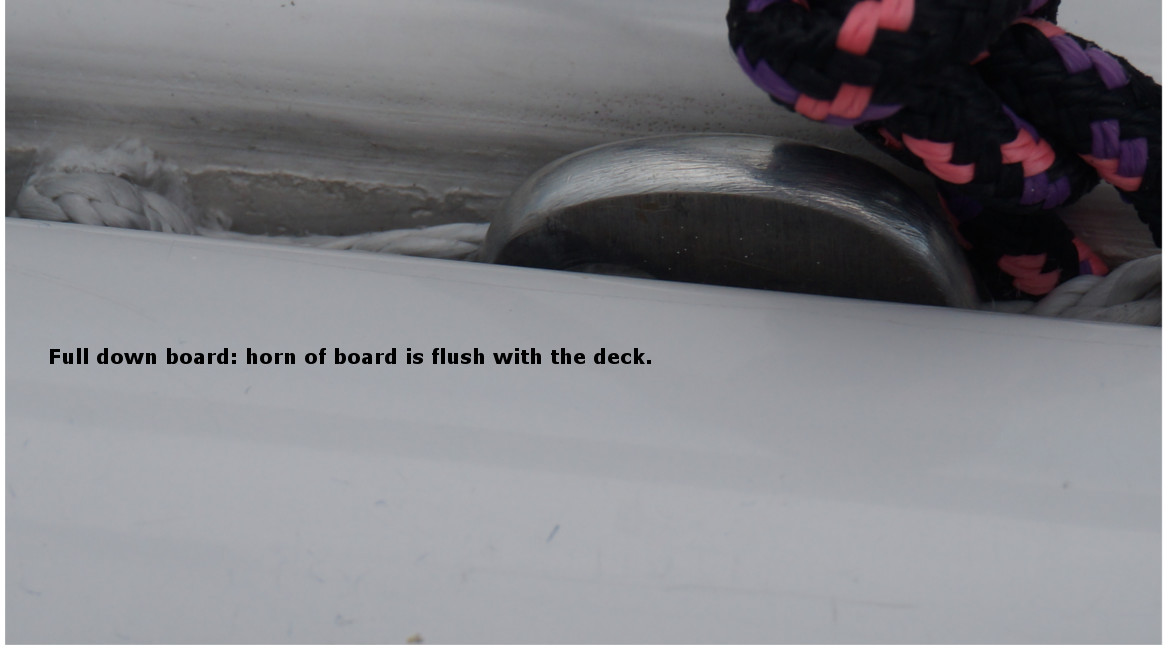Lake Beulah’s John Porter, an accomplished MC-Scow, C-Scow and A-Scow sailor, and a representative for UK sails, shares this MC-Scow tuning guide and sailing tips for sailors using the UK sails model PS1 sail.
Spreaders
Stock Melges position is about 4” swept. Check this by pulling a line tight between the spreader tips and measuring to the mast. For spreaders with 2 positions, choose the one closer to 4”. With barrel adjust spreaders, I prefer to sail around 3-1/2” of sweep. That seems to let me carry slightly more power. The caveat to that is that if it is a drifter and I am winning the regatta, I will tip the boat over and sweep the spreaders back about an inch. I have never done this for a club race, but I have at a big event. It lets the leech open nicely in really light conditions. Neither of these is a big game changer, but if you are mast down and can measure before you put the mast up, you can be “ideal.”
Mast Rake
I have found that 28’ 3-1/2” is a great all around setting.
Shroud Tension
When lightly deflecting the shroud, I like a 3-4” circle as my base tension. As it gets medium, I will tighten the shrouds 4 faces on each side. If it is smoking windy, I will let the boat luff, tighten the leeward shroud, tack, then tighten the other shroud as much as possible by hand. I try to be even in my adjustment which may take a few tacks back and forth. When I get to shore, I can play a note on the shrouds.
Board depth
Generally, new boats are rigged with the boards not going down all the way because knots set and the penalty for going too far is damaging the front of the trunk, causing leaks into the tanks. With that said, usually I can let the board down a couple more inches than “stock.” I do this at the pier by letting the board down and feeling the leading edge. I adjust the knot in the “up” line until there is about ¾” between the board and the front of the trunk. I bounce the board against the knot to make sure it is set well and make sure the stretch in the line doesn’t let the board hit the front of the trunk. This is a big deal and really matters for speed.
Vang Travel
I think the “stock” line length doesn’t allow you enough vang. I generally retie the line that goes up to the boom then to the purchase pulley to take 2” of line away.
Outhaul
North Sails LOVE lots of tension in the foot. UK sails don’t require anywhere near that tension. I generally sail with the slightest horizontal wrinkle in the foot upwind until I use the outhaul to depower. I always ease it just before rounding the windward mark so it eases well for the downwind leg. If you wait until later, you will have trouble getting it to ease and also risk breaking the tack slug that holds the shackle.
Depowering Sequence
Almost every MC sailor doesn’t depower enough or early enough. If I am hiking and the boat heels any more than normal, I am into my controls. Generally, I will take the slack out of my vang, then depower with Cunningham. Once the Cunningam is medium tension, I start adding vang as the puff builds, then pull to max Cunningham. Once I have medium vang and max Cunningnam, I pull the outhaul hard. When it is still not enough, I’ll max out the vang. With the PS1, you will have the opportunity to pull too much vang on. You will simply feel the boat stop. It is a very pronounced thing when there is too much vang. Ease a little and you are good. Finally, drop traveler. The PS1 can stand almost a foot of traveler down while going really fast in breeze. Back to not using enough controls: I am heavy, but I generally will go traveler down multiple times in what most people call a “medium” day. If the puff is there, even for a minute…use the depowering tools. As I approach a puff, I will depower a few seconds before it hits. If I am still overpowered, I’ll pinch to keep the boat on its lines while I pull more controls, then put the bow down.
Point Mode
The PS1 has an unbelievable point mode that can help you situationally, like off a starting line or pinching someone off or tactically like pinching to catch the edge of a puff. To engage point mode, I generally will take a little Cunningham, then trim like crazy. The sail will look ugly, but it can hold almost 5 degrees high for up to 20 seconds without appreciable speed loss if the wind is steady. This will drive the good sailor next to you absolutely nuts because they don’t have that gear unless they have the same sail up. Practice this a bit before doing it in a race, but it is easy to do it regularly.
Tactics
The sail can’t help with tactics, but it can help you get to the spot you want to be with lanes to tack. Use the point mode wisely. If you are lee-bow on someone without a lane to tack and coming into what you think is a knock, use point mode to pinch them off so you have the lane free to tack. This is also HUGE on a starting line. If there is incentive to tack to get to a puff, use point mode to squeeze off the boats above so you can be free to go where you want.
Final Boat Note
I have been burned more than once. Check your tanks for water every day. (Note: This refers to the enclosed areas under the side decks on the enclosed-cockpit style MCs.)
Related Content:
MC-Scow Tuning Guide: North Sails
MC Scow Tuning Guide – Quantum Sails
2017 MC-Scow Masters Championship – Race Course Notes
Sailors Helping Sailors
Will you share your knowledge with your related Comments below?





Thank you for the helpful article. I am confused about “tanks”. When you say “Check your tanks for water every day.”, what tanks are you referring to? Thank you.
Thanks for the comment! In an MC Scow, boats from hull number 2477 to the late 2600’s had a rolled deck that created a sealed enclosure on each side of the boat, commonly referred to as tanks. These could accumulate water.